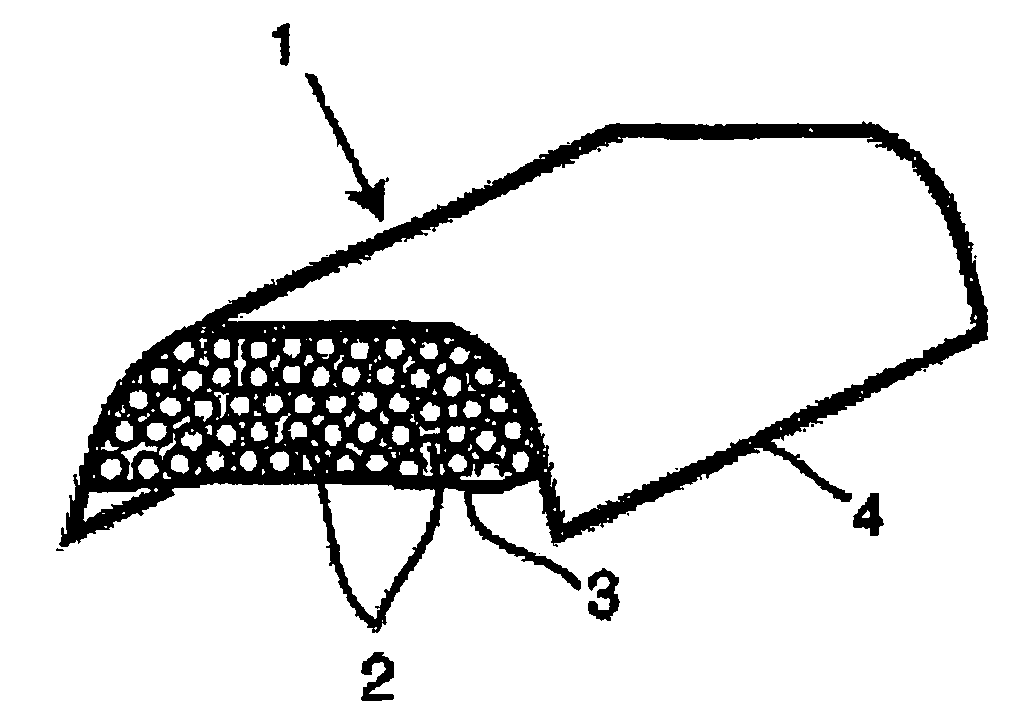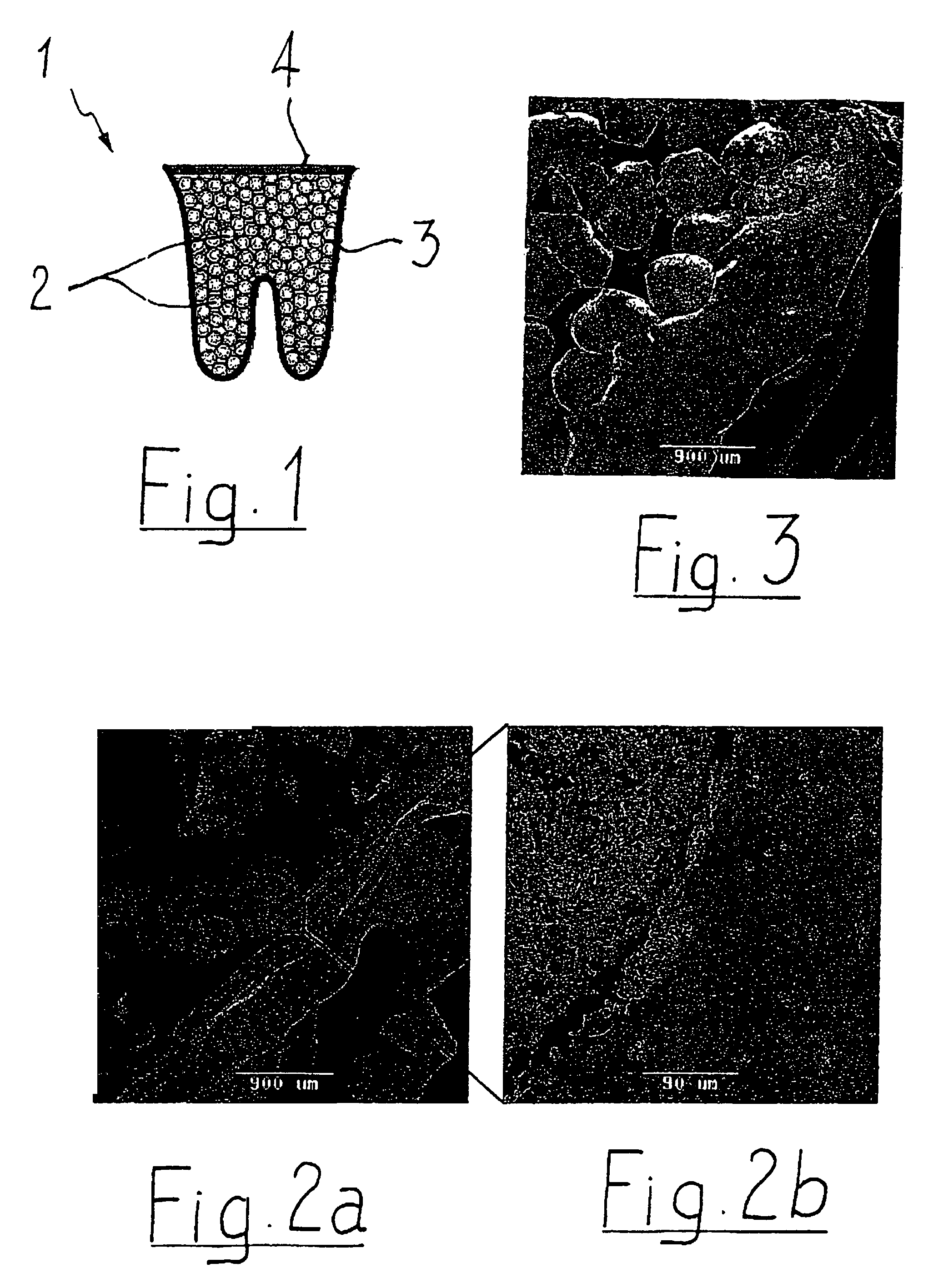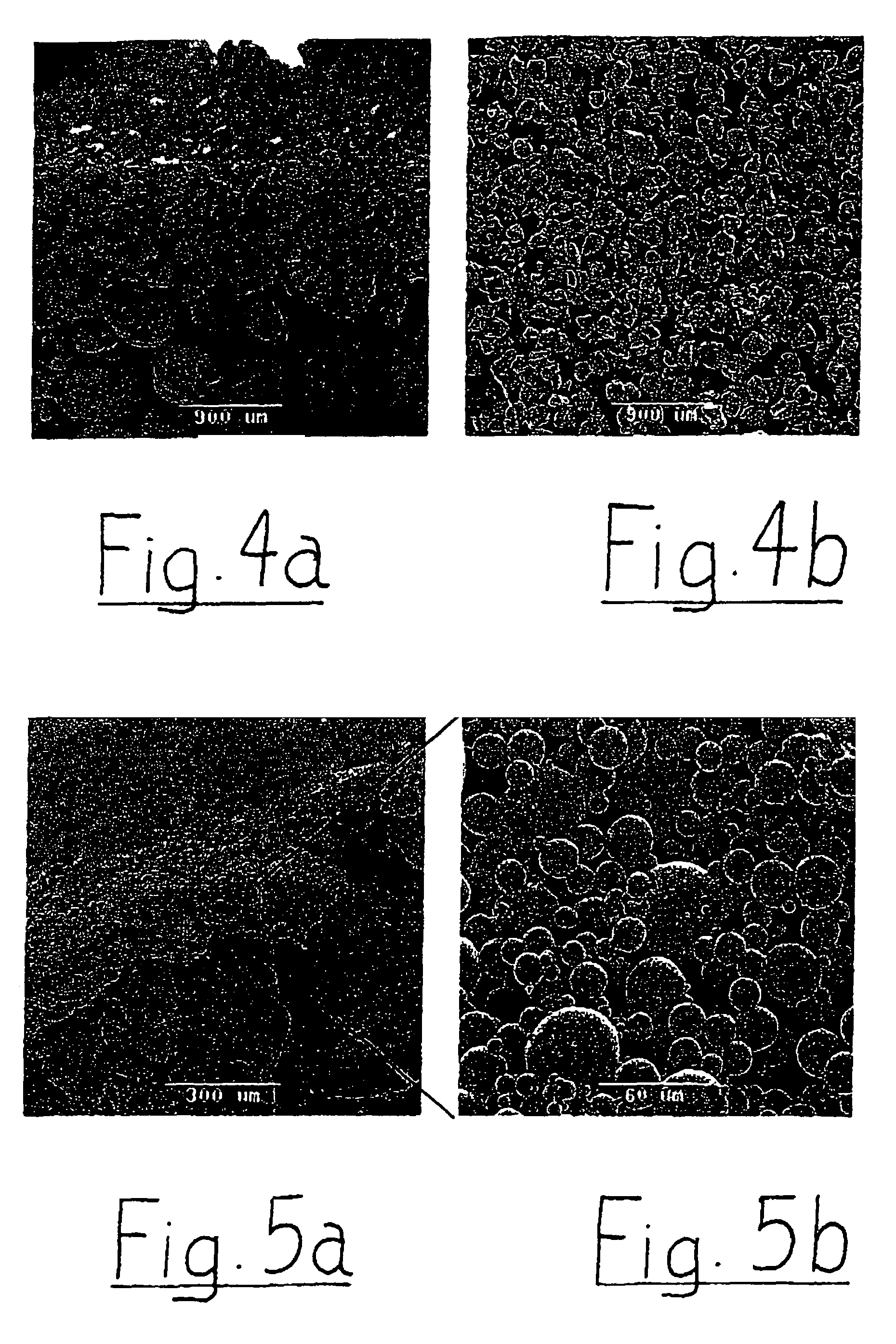Biodegradable biocompatible implant
a biocompatible, biodegradable technology, applied in bone implants, prostheses, medical science, etc., can solve the problems of many drawbacks of biocompatible implants, shortage of donor tissue, bacterial and viral contamination,
- Summary
- Abstract
- Description
- Claims
- Application Information
AI Technical Summary
Benefits of technology
Problems solved by technology
Method used
Image
Examples
example 1
[0076]For the preparation of a polymer film, PLGA may be used. The polymer powder is first compressed between two plates with a load of 100 kN at 140° C. during 10 min. With this process a polymer film having a thickness of about 200 μm is obtained. The film is cut into small pieces of about 10 mm×10 mm.
[0077]A scaffold or composite matrix is prepared in accordance with process A. Briefly, a mold is filled with β-TCP granules which are coated with PLGA. During the heat treatment the granules are gently compressed within the mold. After about 1 In to 3 min a piece of the polymer film is placed on the exposed surface of the scaffold or composite matrix. Because of the elevated temperature of the scaffold or composite matrix the film is malleable and may be easily manipulated in order to cover the entire surface of the scaffold or composite matrix. The polymer film links with the polymer coating of the coated granules of the scaffold or composite matrix. After cooling of the mold, the ...
example 2
[0078]Polymer ganules are prepared from PLGA powder. The powder is compressed between two plates with a pressure of 100 kg / m2 at 130° C. for about 40 min. After cooling a solid plate having a thickness of about 500 μm is obtained. The solid plate is cut into pieces which are ground in a centrifugal mill. After milling polymer granules with a size of about 100 μm to about 200 μm are obtained.
[0079]A scaffold or composite matrix is prepared in accordance with the process in Example 1. The mold is then placed under an infra-red lamp which allows to heat the surface part of the polymer barrier membrane at about 130° C. After about 30 s of heat treatment the mold and the implant are allowed to cool. The implant is removed out from the mold. The implant is provided with a non-porous barrier membrane as is depicted in the electron microscope cross sectional view in FIG. 3.
example 3
[0080]The scaffold or composite matrix and the polymer particles are prepared as in Example 2. About 50 mg to 100 mg of polymer particles are poured into the mold on the exposed surface of the scaffold or composite matrix. After about 1 min to about 3 min at 80° C. to 100° C. the polymer granules have linked with each other and with the surface of the scaffold or composite matrix. The mold is allowed to cool and the biodegradable biocompatible implant is removed. With this process a biodegradable biocompatible implant is achieved having a barrier membrane sealed to its surface which is, in a preferred embodiment, macro-porous. The pores in this embodiment have sizes within a range of about 100 μm to about 500 μm. This is clearly shown in the cross sectional view in FIG. 4a, in which the large granules form a part of the scaffold while the smaller particles are a part of the barrier membrane. The top plan view of FIG. 4b shows the porosity of the exposed surface of the barrier membra...
PUM
| Property | Measurement | Unit |
|---|---|---|
| equivalent-diameter | aaaaa | aaaaa |
| thickness | aaaaa | aaaaa |
| equivalent-diameter | aaaaa | aaaaa |
Abstract
Description
Claims
Application Information
 Login to View More
Login to View More - R&D
- Intellectual Property
- Life Sciences
- Materials
- Tech Scout
- Unparalleled Data Quality
- Higher Quality Content
- 60% Fewer Hallucinations
Browse by: Latest US Patents, China's latest patents, Technical Efficacy Thesaurus, Application Domain, Technology Topic, Popular Technical Reports.
© 2025 PatSnap. All rights reserved.Legal|Privacy policy|Modern Slavery Act Transparency Statement|Sitemap|About US| Contact US: help@patsnap.com



